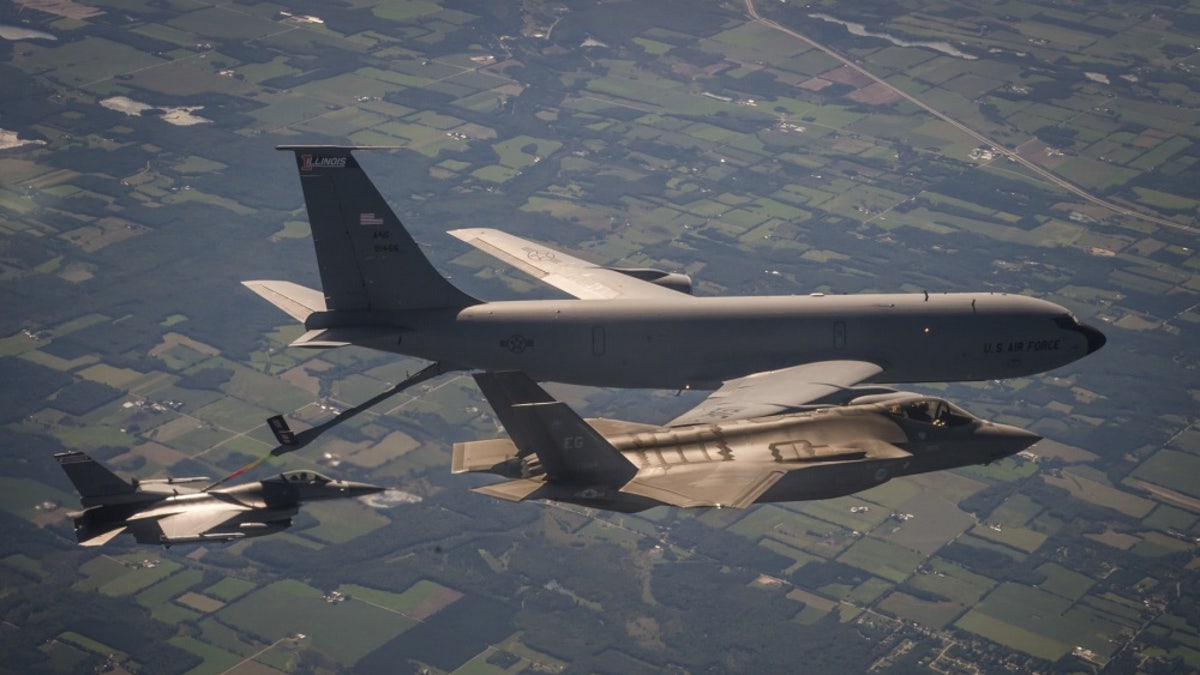Fox News Flash top headlines for February 16
Fox News Flash top headlines are here. Check out what's clicking on Foxnews.com.
The U.S. Air Force has ordered its entire fleet of KC-135 tankers to be grounded for inspection over concerns that their tails could fall off mid-flight if not properly fixed.
The USAF ordered the inspections on Tuesday for a "non-conforming part in the vertical tail assembly." Flight operations are restricted until the roughly 30-minute inspection is complete.

A KC-135 stratotanker sits on the tarmac at Nellis Air Force Base in Nevada during Red Flag training exercises. (Fox News)
Tuesday’s order follows a Friday directive for each KC-135 tanker to be inspected for non-conforming vertical terminal fitting pins, or tail pins.
Friday’s requirement is to take place over the next two weeks, while the more recent directive requires inspections prior to the next flight.
"We're taking this action out of an abundance of caution, after consulting with our engineering experts," Col. Michael Kovalchek, Senior Materiel Leader with the Air Force Life Cycle Management Center's Legacy Tanker Division, said in a statement. "We are working closely with Air Mobility Command and all operational users and anticipate all potentially affected aircraft will be inspected."

A 33rd Fighter Wing F-35A Lightning II escorts a 126th Air Refueling Wing KC-135 Stratotanker and a 176th Fighter Squadron F-16C Fighting Falcon. (USAF Staff Sgt. DeAndre Curtiss)
As of Sunday, 90 aircraft had been inspected, with some two dozen found to have non-confirming pins, the USAF said. Planes that have already been inspected and found with proper pins have returned to flying status.
According to a memo shared online last week, more than 200 KC-135 aircraft could be impacted by this issue.
CLICK HERE TO GET THE FOX NEWS APP
Efforts to replace the Air Force’s KC-135 fleet, which first rolled off the assembly line in the 1950s, have been underway for at least two decades. The aerial tankers refuel Air Force bombers and fighters in flight, extending their potential mission range to hotspots around the globe.



